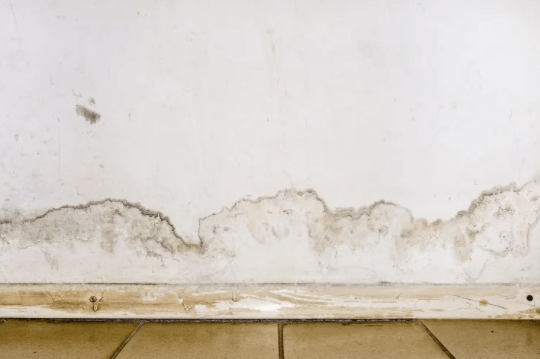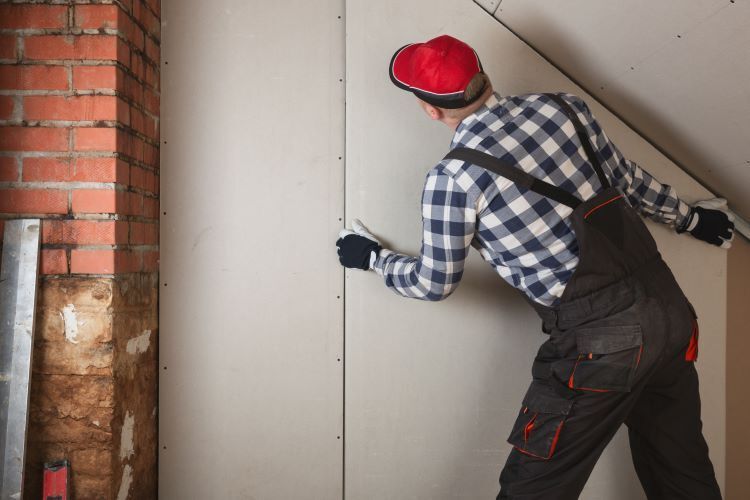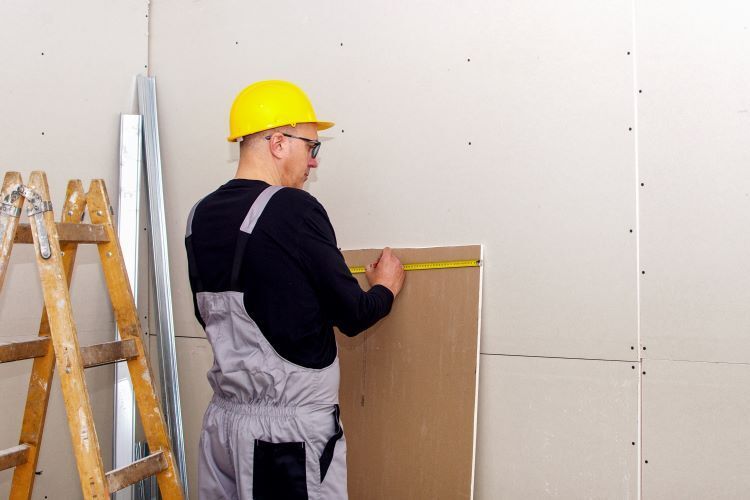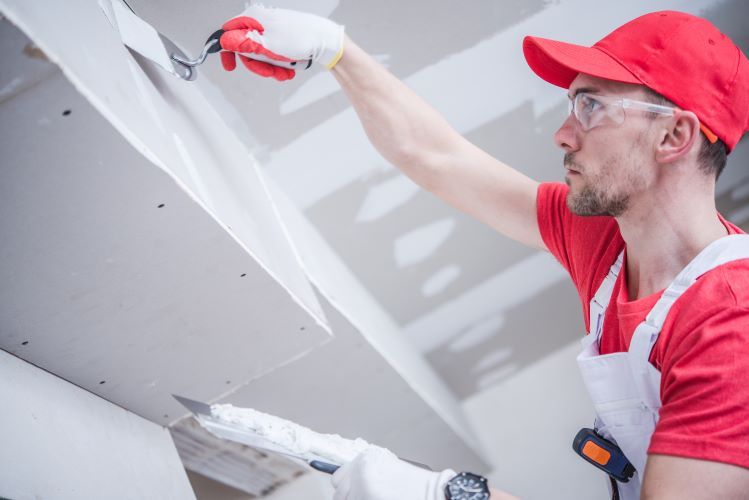drywall repairs
In Depth Look at Drywall Repairs

If you're like the majority of homeowners, then chances are that at some point in time you will need to deal with drywall repairs. Drywall is one of the most widely used materials for construction because of its cost effectiveness and ability to easily be attached to wooden structures. However, this easy installation doesn't come without consequences, which is why it's quite likely that at some point you will encounter damage or deterioration on your walls created by moisture or otherwise. If left unaddressed, holes and water damage can lead to further damages such as structural collapse or mold growth inside the wall cavity. This article provides an overview on all types of drywall repairs including how to determine if a hole can be repaired versus replaced, repairing cracks in a wall and how to deal with water damage.
by Barrie Drywallers
What are the Different Types of Repairs Available?
There are many different types of repairs available depending on the type and severity of drywall damage that has occurred. All of these options require thorough investigation in order to determine the best course of action for each situation. For example, if you notice a crack running parallel to your ceiling or floor joists, this is often an indication that sections of dry wall may have become loose or detached from their original supports due to movement or settling within your house. If this is determined, then repairing this issue will involve adding new wood blocking behind the damaged area before reattaching it back to its previous support structures. On the other hand, if the crack is found to be perpendicular to the joists, it's possible that this could be caused by either settling or another structural issue. If this is the case, then you'd likely benefit from hiring a repair professional who can help assess your home and provide their recommended options for repairing specific structural damages.
By far one of the most common types of drywall repair is the replacement of small sections. In many cases when a hole in drywall has occurred, often times it may not be necessary to replace an entire section given how easy replacement pieces are available for purchase at your local hardware store. This will depend on a variety of factors including size and location of the damage in question, but in general these materials can easily be cut down to size in order to repair any hole that has occurred.
For larger sections of drywall, or when dealing with water damage it may be necessary to replace the entire section. In these cases cuts will need to made in order to remove the damaged material before installing new pieces of drywall in their place. Since all walls are different sizes depending on where they are located in your home, this type of repair requires precise measurements and cut outs so that you can continue using your wall as a flat surface once again. If you have observed water damage on your walls chances are that at some point there was also a hole which facilitated the movement of the water into your walls. This could have happened through a number of different ways, but either way if you notice an unusual amount of water staining on your walls then there was likely some sort of damage. Before assuming that there is nothing that can be done to repair the hole, it's important to first gather all the necessary information regarding its positioning and size so you can determine whether or not this type of drywall repair is possible. Whenever inspecting your walls for any kind of damage, always remember to take careful measurements so that you know exactly what needs to be repaired prior to making any cuts into your wall. If after use of a stud finder you are unable to locate studs behind where the hole is located in your wall, then chances are that this section will need to be completely replaced.
How Do You Fix Cracks in Drywall?
Cracks in drywall are typically occurring due to either excess movement of the walls themselves or structural issues with your home's foundation. A great way for you to determine if this is the exact reason why cracks have formed is by performing a simple push test on your wall. If you are able to easily flex these sections of wall, then most likely they will need to be replaced entirely since they cannot provide any additional structural support for your home's walls. This is especially true if you can feel large gaps between two different sections of drywall when pushing up on them. However, if after performing this test it appears that only specific areas within one section of drywall that has cracked are loose, then you can attempt to repair this section by following this process.
First, you will need to cut out the damaged material so that it is flush with the remaining portions of your wall's surface. After doing so, you should also remove any tape or additional compound found around the edges of where the damage has occurred. Next take a small piece of fiberglass sheeting measuring about 1/8 2inches 2 and use drywall screws to attach this section into place behind where the hole is located in order to provide additional support for your walls. Be sure that there are no gaps between either side of sheeting before using joint compound over these areas as well as anywhere else on the wall which appears damaged beyond simple patch work repairs.
Reasons for Cracks in Drywall
If you have been satisfied with the repair method outlined above, it's important to understand why cracks are occurring within your walls as well as what types of damage may need to be repaired before considering this solution. In many cases these holes will provide very little structural integrity compared to a complete wall section replacement. This is due to the fact that most often drywall patches do not typically include utilities such as electrical wiring or plumbing which can also lead to excess strain on a wall that has been patched up. If after performing a push test and any areas of drywall feel very loose there is always the option for you to simply purchase new sheets from your local hardware store without having to take out an entirely new section from elsewhere in the house. This method is a far less expensive option for you, and it will still provide the same surface area as the entire drywall section which was originally damaged.
Holes in Drywall Repair Procedures
In order to repair any type of hole that has been created within your wall's surface, regardless of whether or not it is an actual crack that has occurred or one caused by something else entirely such as a mishandled screwdriver during a hanging project, there are certain steps you can take to make this job easier on yourself. The first step in performing these types of repairs is always going to be gathering all necessary tools and materials before beginning work on a single problem area. You should arrive at the site complete plaster replacement kits which will typically come with any necessary tools and supplies you would need to complete the job.
Although this process is rather involved and time consuming in nature, you will be able to reduce any stress and frustration when trying to complete a simple drywall repair by ensuring that you have all of your equipment prior to beginning work. This includes items such as:
• A new section of drywall that is larger than the section which needs replaced
• Joint compound
• Fiberglass mesh tape (if applicable)
• Utility knife or blade
• Utility knife handle (if applicable)
• Sandpaper or steel wool pad • Screwdriver Once you have gathered these items together it's time for you to begin working on repairing the hole itself.
The first process will be to cut out any damaged sections of drywall which were directly affected by the hole. This should not include sections that fall within a larger area of damage such as those found in cracks and stains throughout your wall's surface unless the entire section needs replaced. After cutting out these sections you then need to measure and mark an appropriate size for your new piece of drywall, and then you can make the cut with either a saw or utility knife.
After this step has been completed it is important to apply some primer onto all fresh surfaces before moving on in order to ensure proper adhesion between your drywall patch job and surrounding areas in order to promote proper durability in comparison to when using plain joint compound alone. If fiberglass mesh tape is required, use a heavy coat of primer in order to finish this step and create a more stable surface before applying any additional coats of compound onto your wall. Fiberglass mesh patches typically only need two coats in comparison to standard drywall patches which will require three coats, all performed after the initial primer has been applied.
After this final step you can then go ahead and apply your compound over both patched areas as well as the surrounding sections that had been cut away from damage using either a tool or knife designed for making these types of repairs. You will want to make sure that all cracks are filled completely with a smooth even layer of compound once again taking care not to miss any spots while applying an even coat across multiple surfaces. After allowing time for the compound to dry completely, you can then apply a finishing coat of material which will make your wall's surface look as good as new.
Drywall Repair for Water Damaged Areas
Water damaged areas within your walls' surfaces are also something you should be aware of, often appearing in the form of either stains or an actual leak that has caused water damage to take place before seeping through into the other side. This type of damage is typically able to be repaired using standard drywall repair materials and techniques mentioned earlier; however if you determine that this problem actually originated from a preexisting leak there are additional steps that may need to be taken before any patching can begin. You should use a moisture meter in order to test for moisture in the walls before beginning any type of repair job. If you discover that moisture is still stuck behind any wall's surface due to a leak than there is no other option than to cut away the area and replace it with a brand new piece of drywall.
Water damage can often be prevented by taking the necessary precautions involved with identifying and patching up any type of preexisting leaks prior to allowing water to damage your wall's interior, but if this doesn't occur than you should immediately cut out and replace any areas which have been affected by water damage in order for your interior space to look as good as new again.
Drywall damages can occur in a variety of different ways, typically stemming from either water damage or simply cracks and holes that need to be repaired. In this article we covered the various techniques involved with repair processes for drywall damages such as patching up holes and cracking areas within your wall's surface using both drywall patches and fiberglass mesh tape. We also discussed the different types of reasons these types of damages take place such as leaks or simply general cracks throughout your walls' interior surfaces.
Finally we went over the steps involved with repairing water damaged areas while also discussing how to go about preventing future problems by identifying and patching up preexisting leaks before allowing them to cause long term damage to your wall's supporting structures then opting for the replacement of any affected areas with a brand new piece of drywall.
After reading this article you should have gained a vast amount of knowledge on the topic of drywall damages and how to properly repair them. If you have any questions or would like to know more about drywall and it's processes please don't hesitate to contact the professionals at Barrie Drywallers. We've been in the industry for years and in that time have handled all types of repairs, renovations and new builds. Our team would be happy to talk to you about your next project, and if you're ready to move forward then we can provide a free no obligation estimate, so contact us today, we can't wait to hear from you!
You Might Also Enjoy:



Contact Us!
